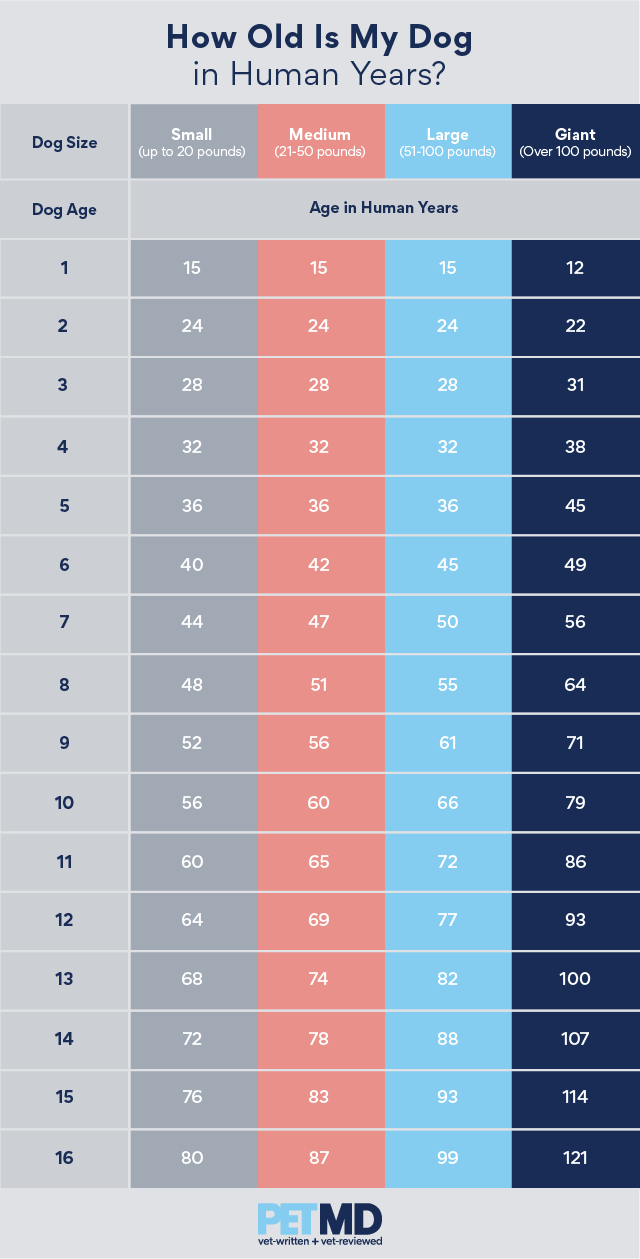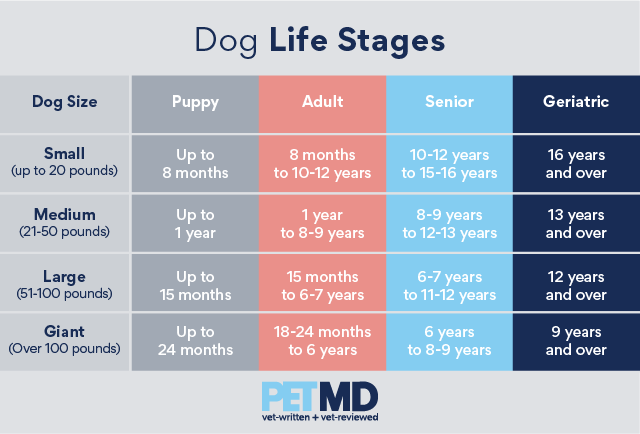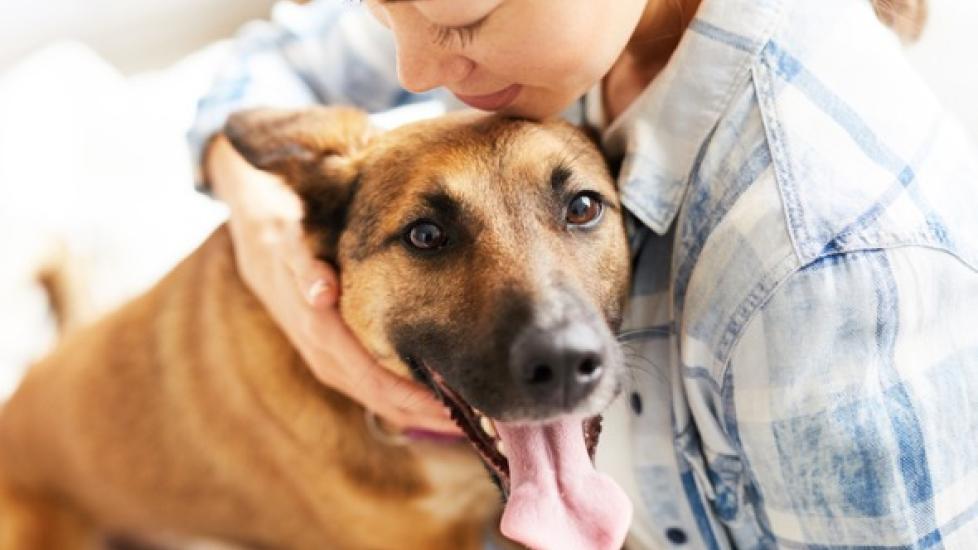How to Convert Dog Years to Human Years
Is one human year equal to seven “dog years” when it comes to a dog’s age? Recent studies have shown that this isn’t exactly true.
We all want our dogs to live forever, and we want to know how our dog’s age relates to human years. So what are dog years, and how do you calculate dog years in human terms?
Here’s everything you need to know to convert dog years to human years—and to understand the science behind it.
What Are Dog Years? Does One Dog Year Equal Seven Human Years?
Multiplying your dog’s age by seven may be easy to do, but it won’t accurately convert dog years to human years.
That’s because dogs mature more quickly than humans do in their early years. In fact, the first year of a dog’s life is equivalent to the first 12-15 of a human’s! The second year of a dog’s life equals about 9-10 human years, while each year after that is worth about 4-5 human years.
So 1 year in dog years could equal anywhere from 4 to 15 human years, depending on which life stage your dog is in, as well as their size.
Additionally, smaller breeds tend to have longer life spans than larger breeds. Smaller dogs are usually considered senior at the age of 7, while large breed dogs might be considered seniors at ages 5 or 6.
How to Calculate Your Dog’s Age in Human Years
Use this chart to convert dog years to human years.

Dog Life Stages: When Is a Dog Considered a Puppy, Adult, or Senior?
Is your dog still a puppy? When is a dog considered an adult? What’s the age range for older dogs to be considered seniors? This chart gives you a basic idea of what life stage your dog is in. Please note that these are not exact guidelines.

Why Do Small Breed Dogs Live Longer Than Large Breed Dogs?
The reasons why small dogs have longer life spans than larger breed dogs aren’t completely understood. In fact, throughout the rest of the animal kingdom, the opposite tends to be true—larger animals usually outlive smaller ones.
But veterinarians see larger breeds age at a faster rate, and they tend to see age-related diseases at a younger age in larger breeds than in small dogs.
Research from the University of Gottingen in Germany shows that every increase in 4.4 pounds reduces life expectancy by approximately one month. Lead researcher of this study, Cornelia Kraus, speculates that because larger breeds age faster and grow more quickly, the abnormal cell growth found in cancers is more likely to occur.
Other researchers have theorized that because large breed dogs age faster, they also develop age-related diseases earlier in their lives. Another theory is that small dogs might tend to be “pampered”—carried around in purses or kept inside, for example—while large dogs tend to lead a more active lifestyle, doing things like hiking, boating, and running. That more active lifestyle comes with risks, which could lead to an earlier mortality.
Why Do Dogs Age So Fast Compared to Humans?
The Dog Aging Project has launched an ongoing, long-term initiative to study the biological and environmental factors that maximize dog health and longevity.
The goal is to understand how genes, lifestyle, and environment influence a dog’s aging process. You can even nominate your dog to be a part of the Dog Aging Project by visiting their website at https://dogagingproject.org.
Remember, yearly visits to your veterinarian can help prevent, detect, or slow age-related diseases, potentially helping your pet to live longer.
Featured Image: iStock.com/
